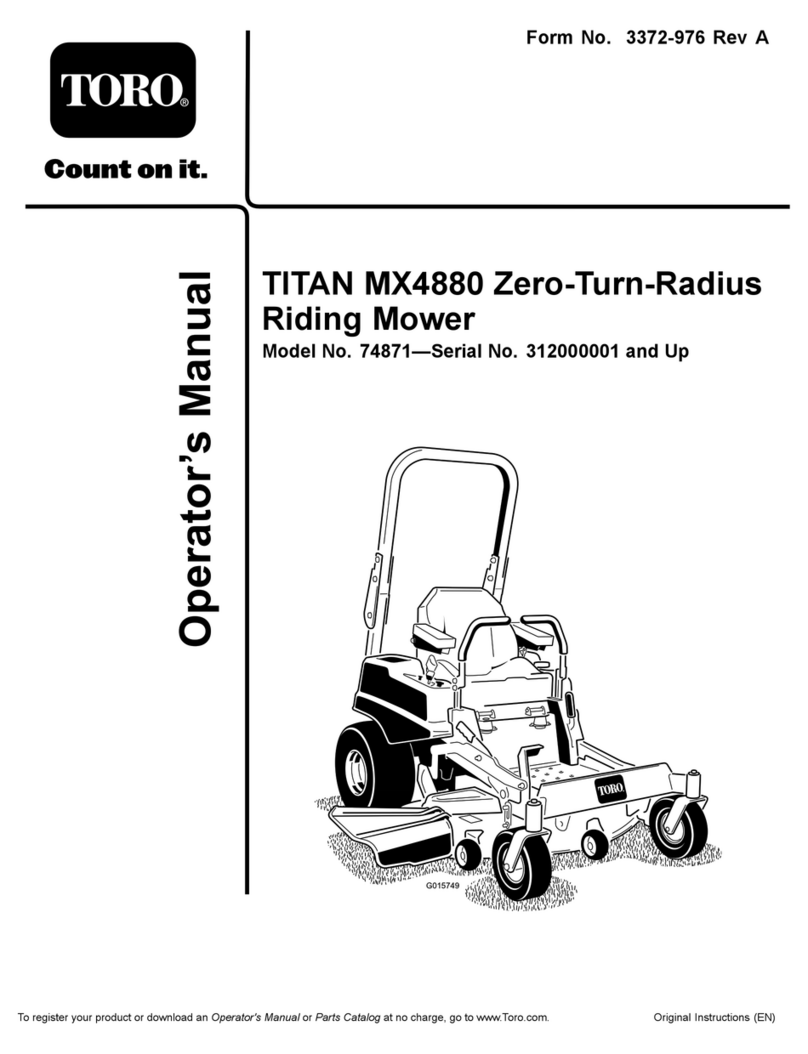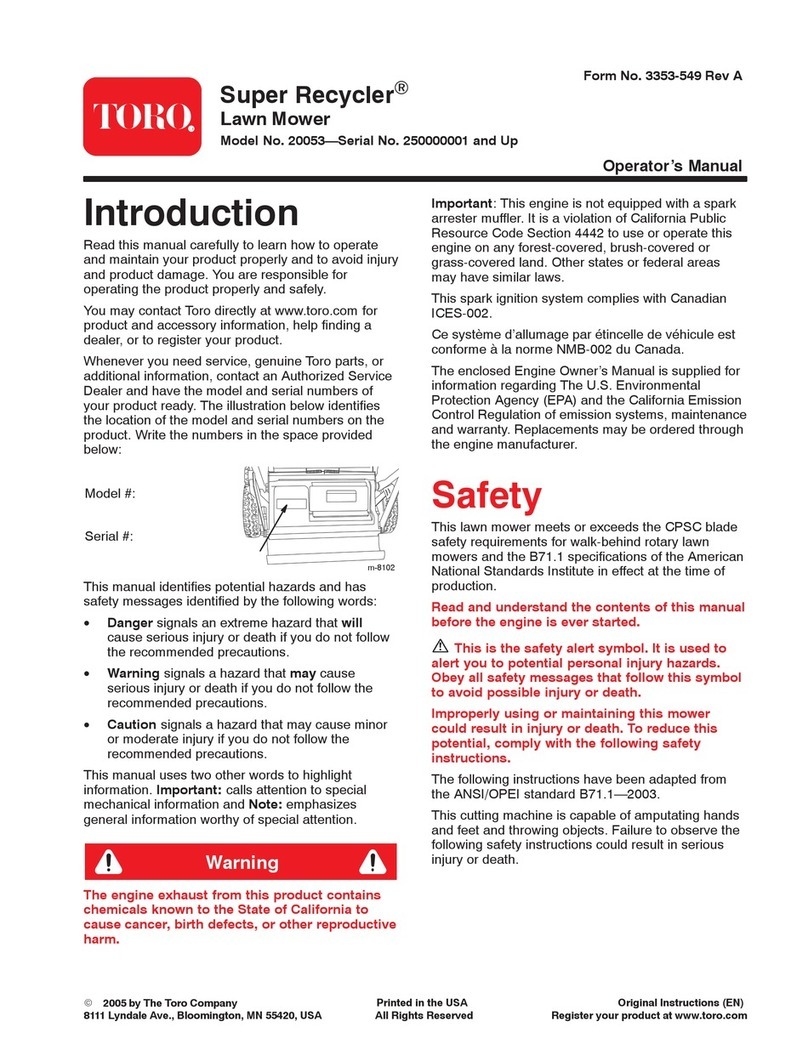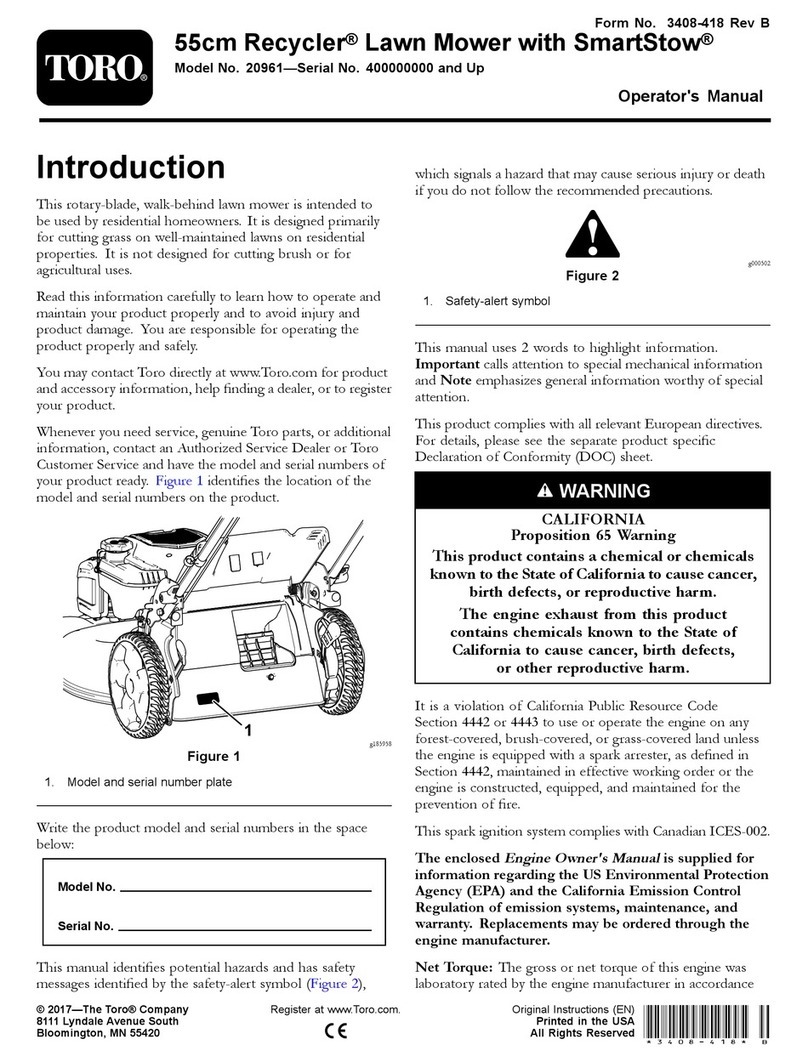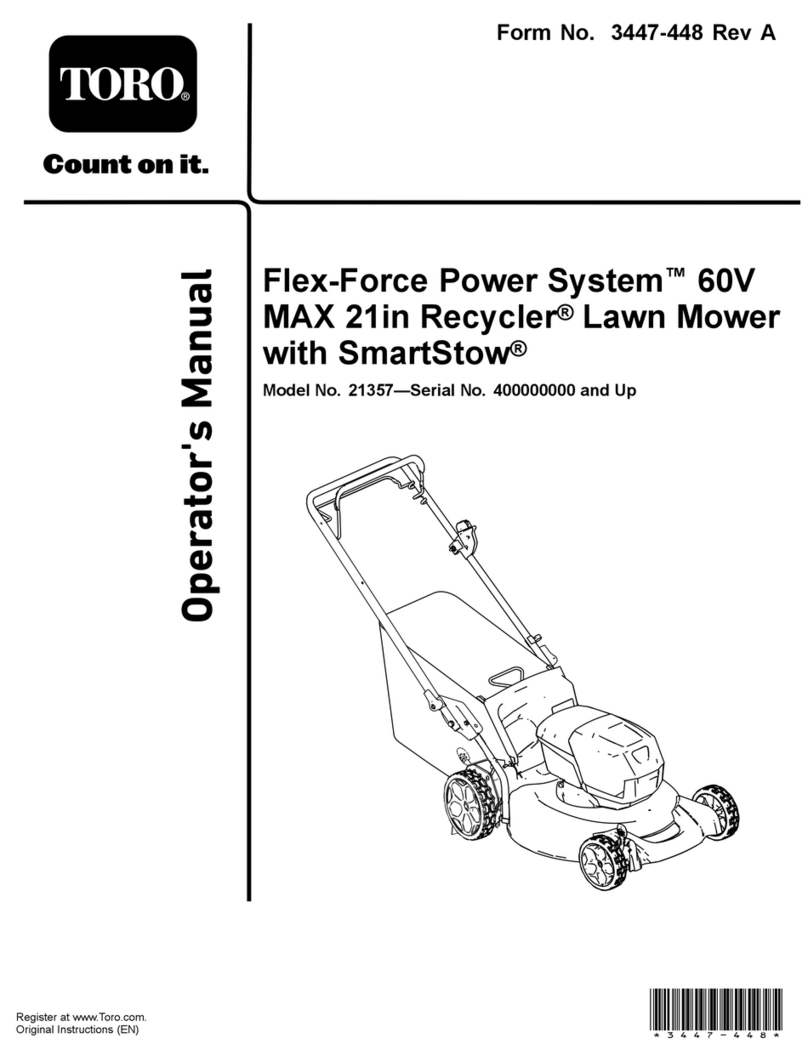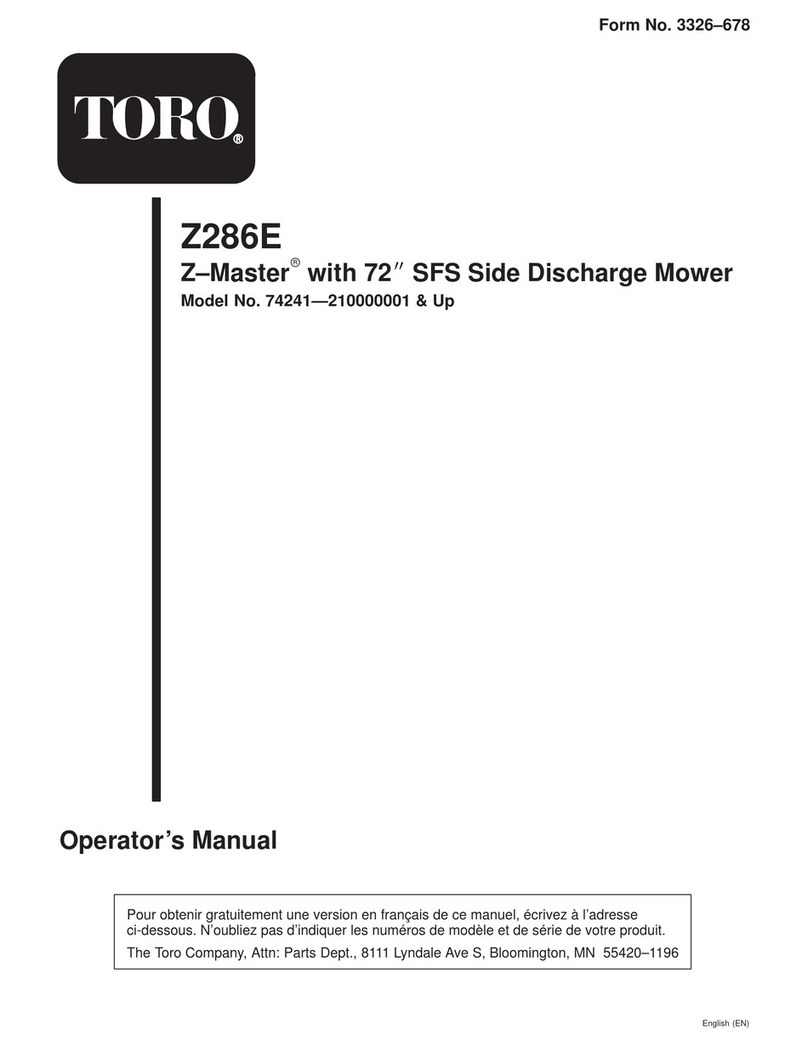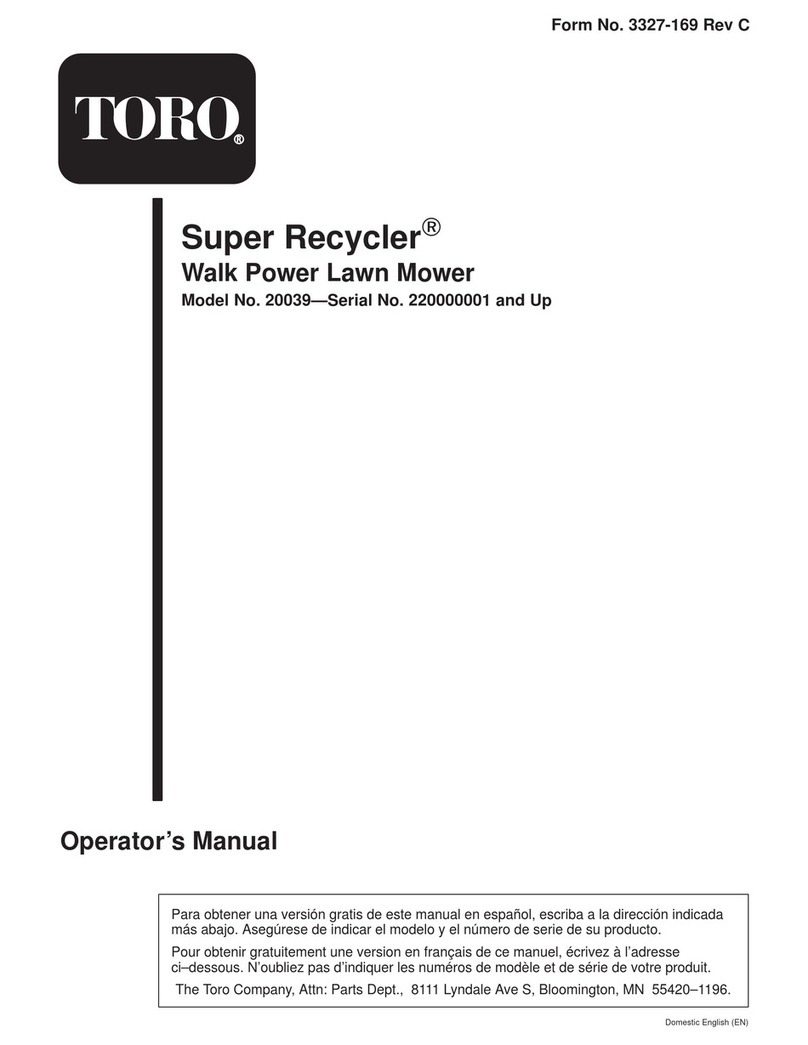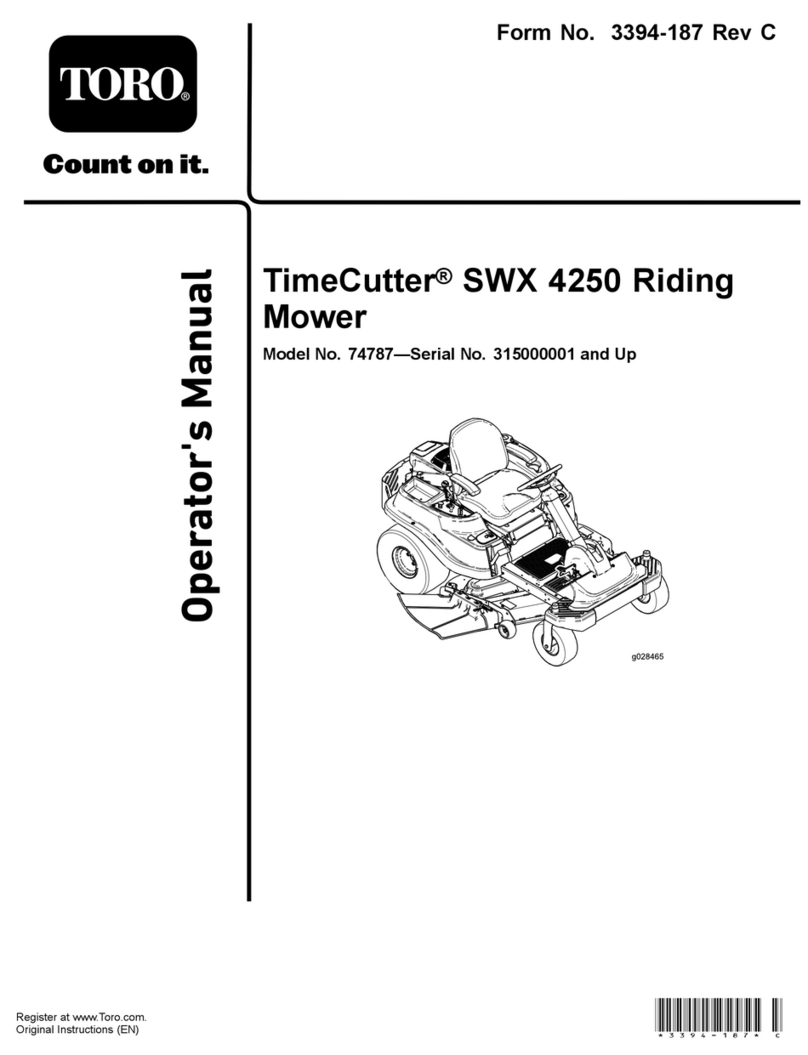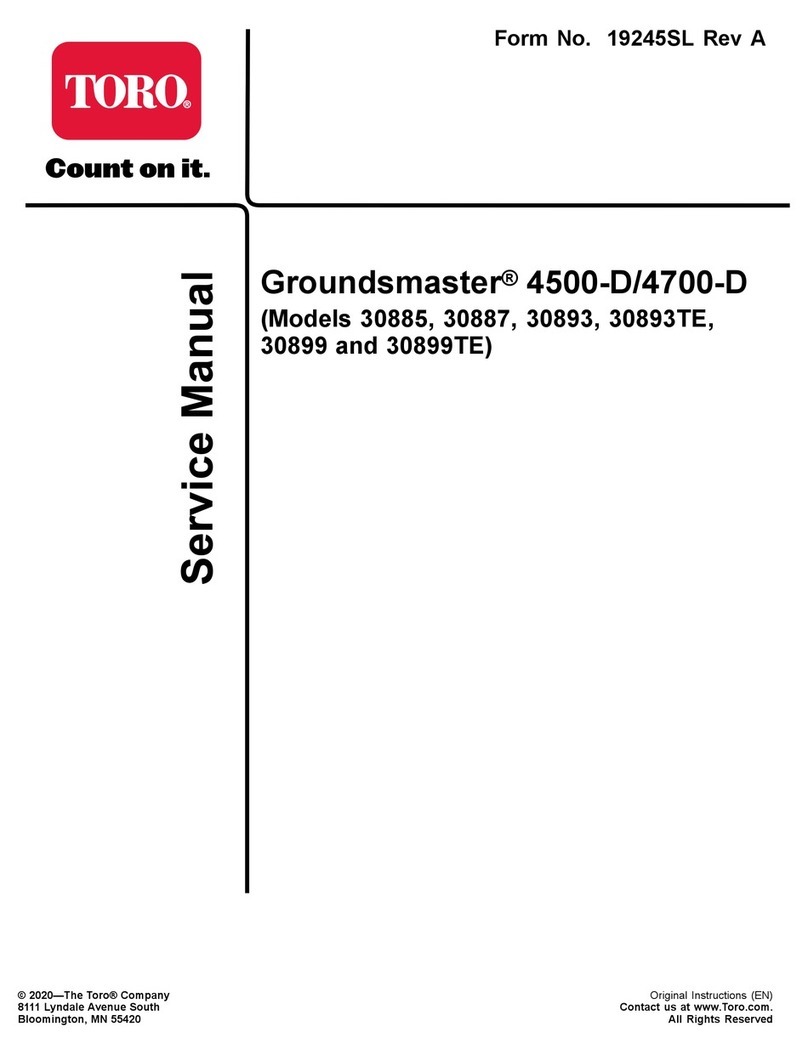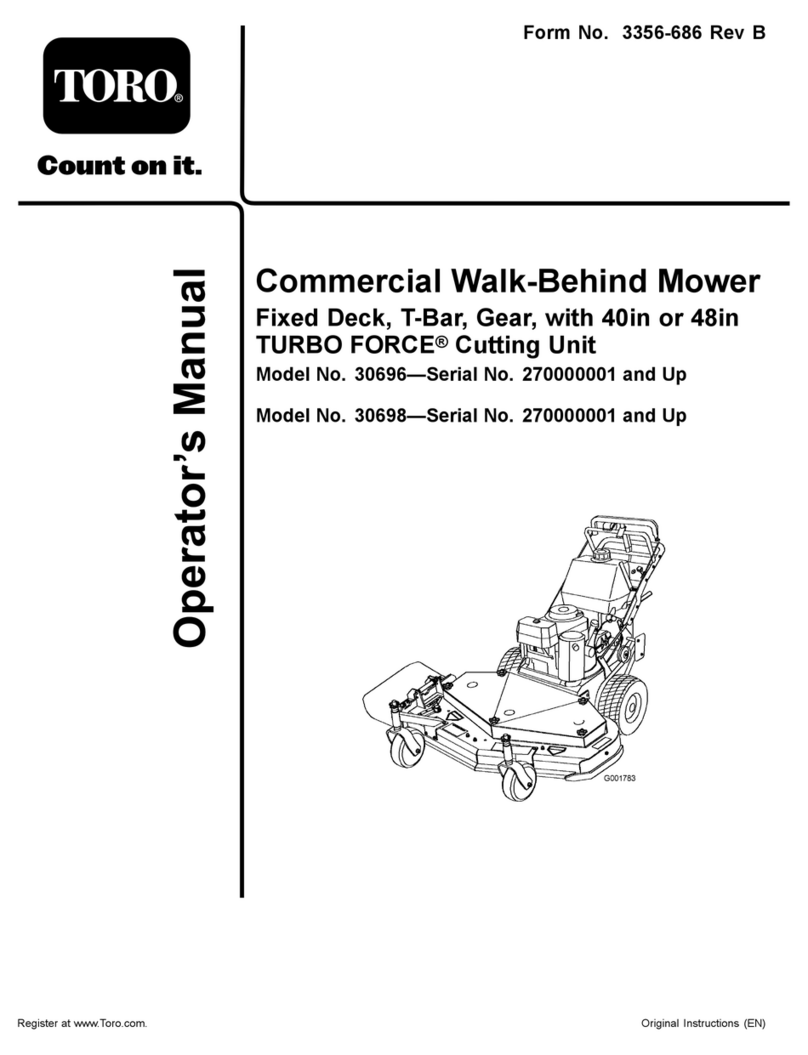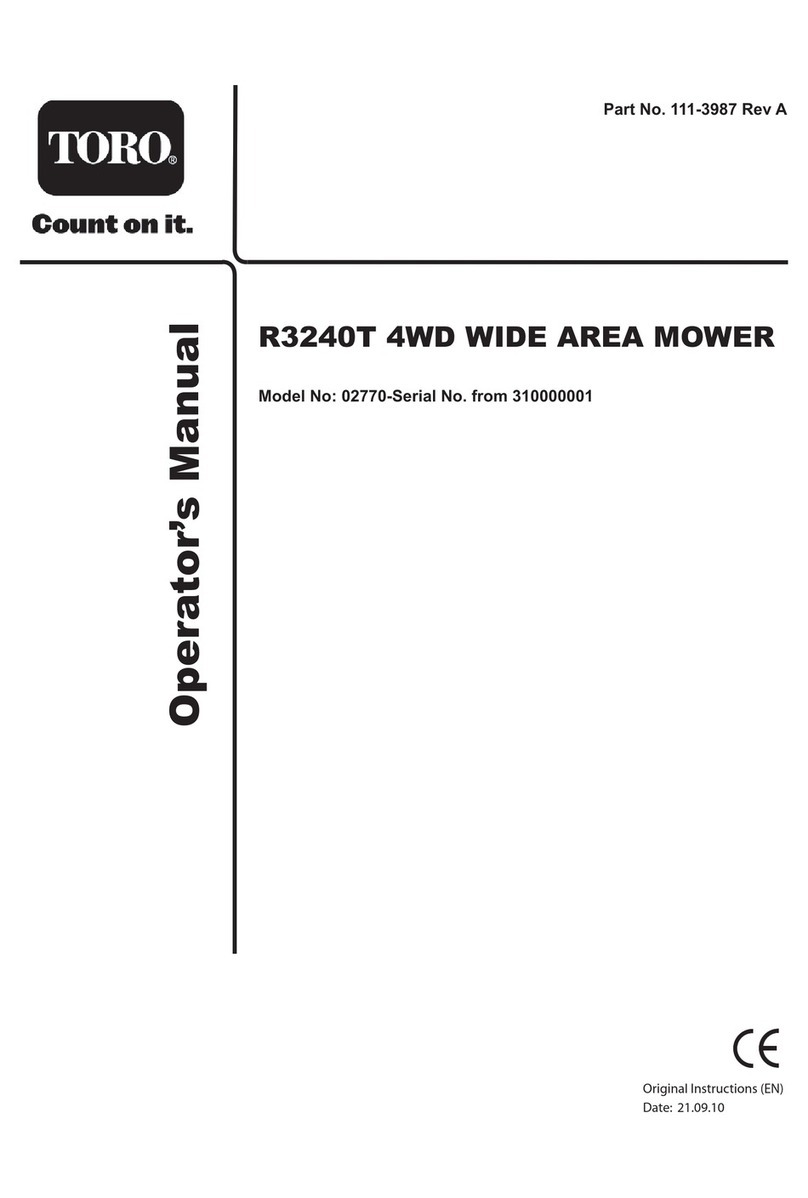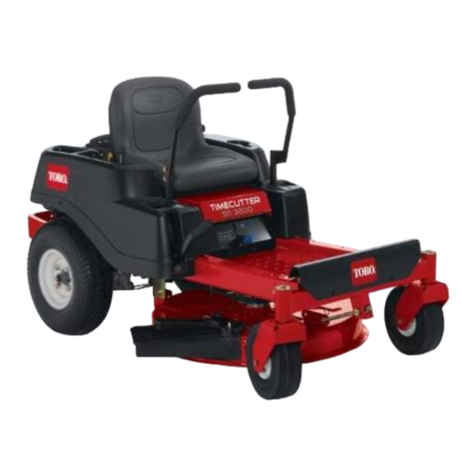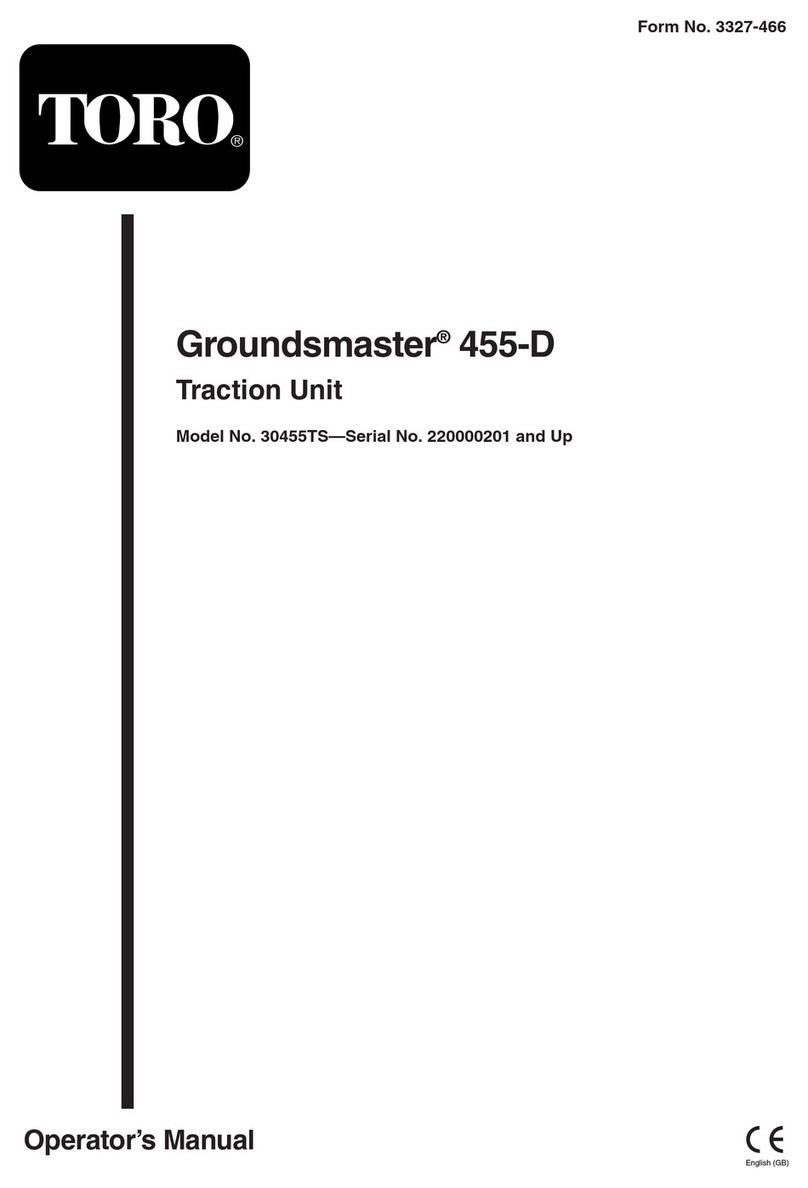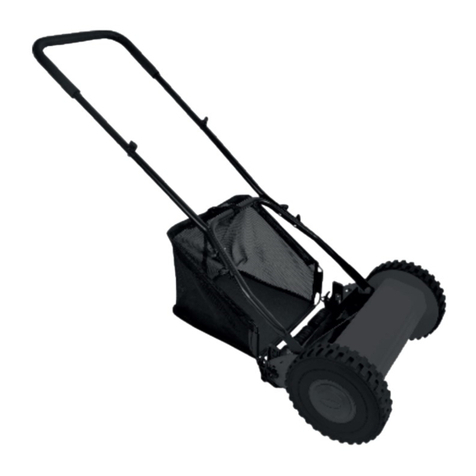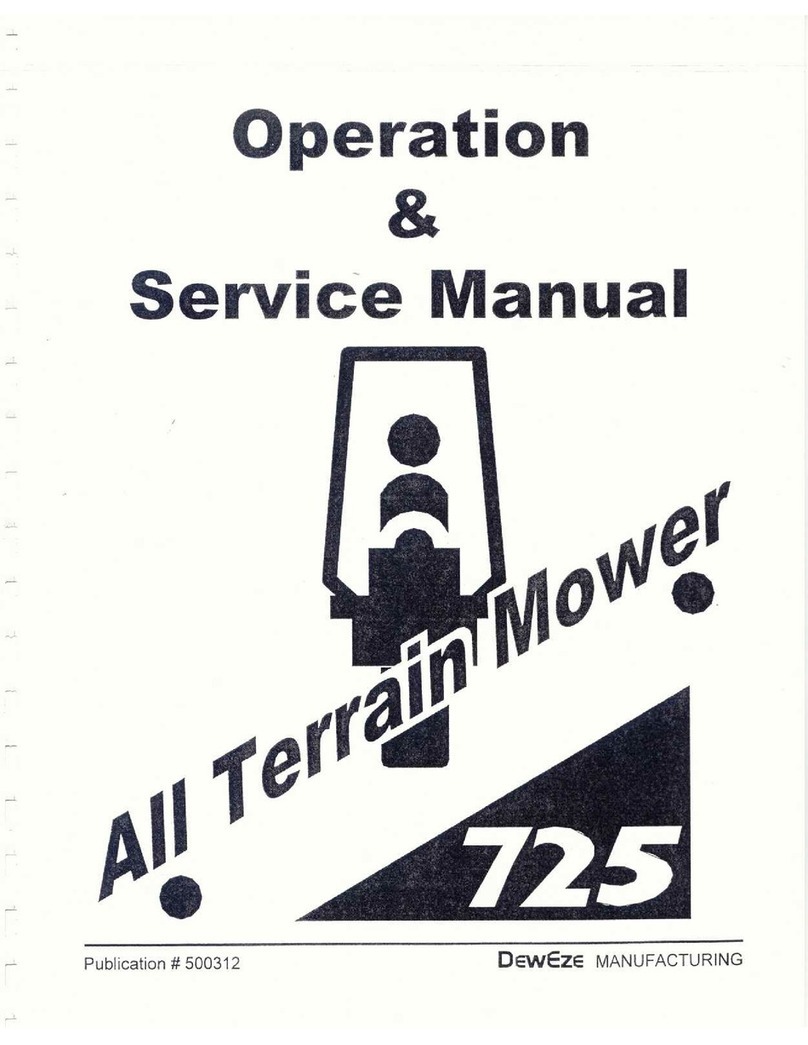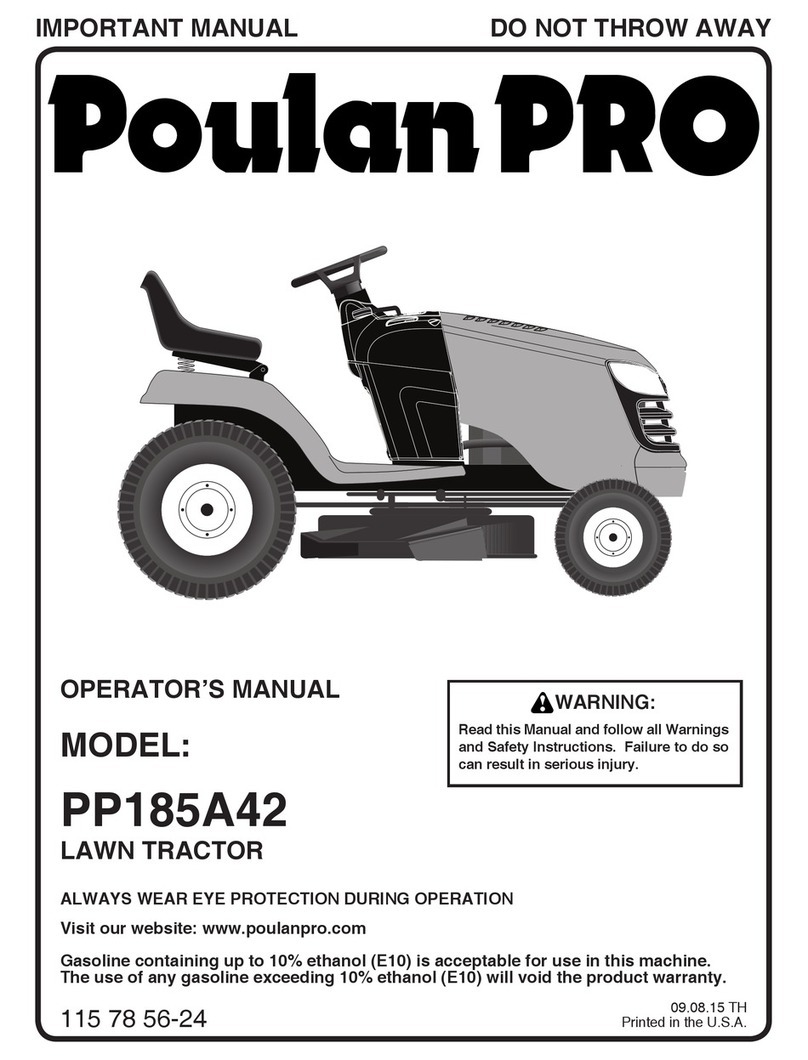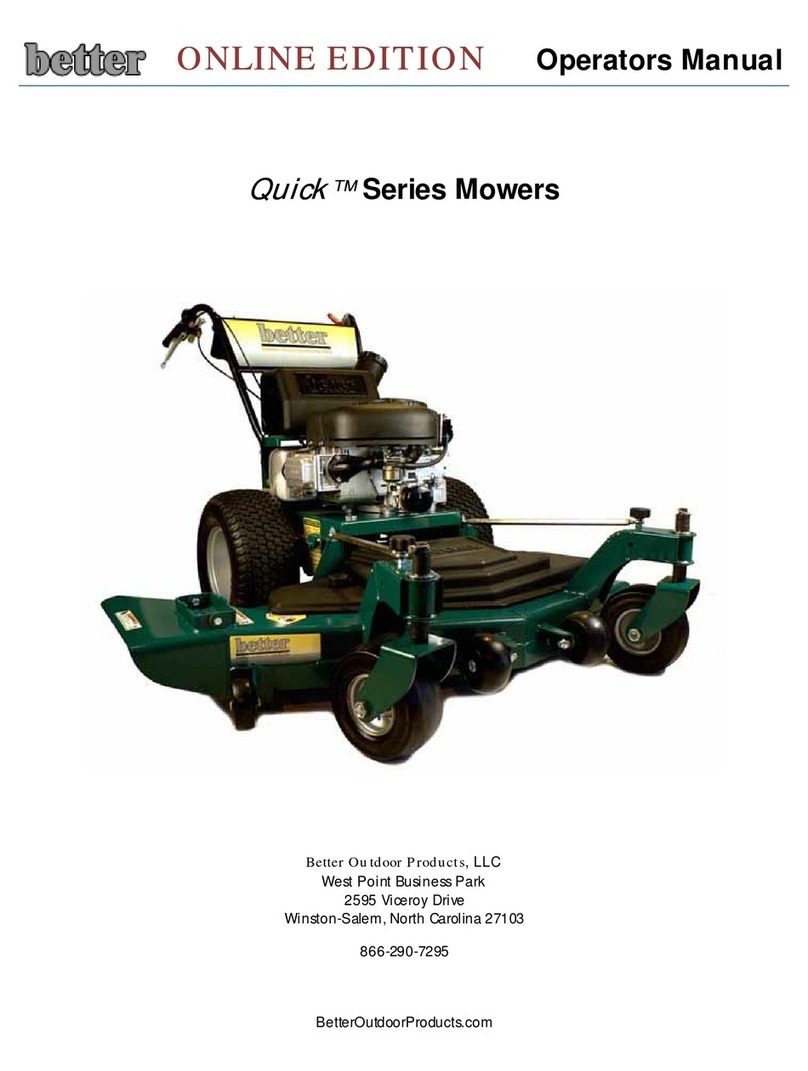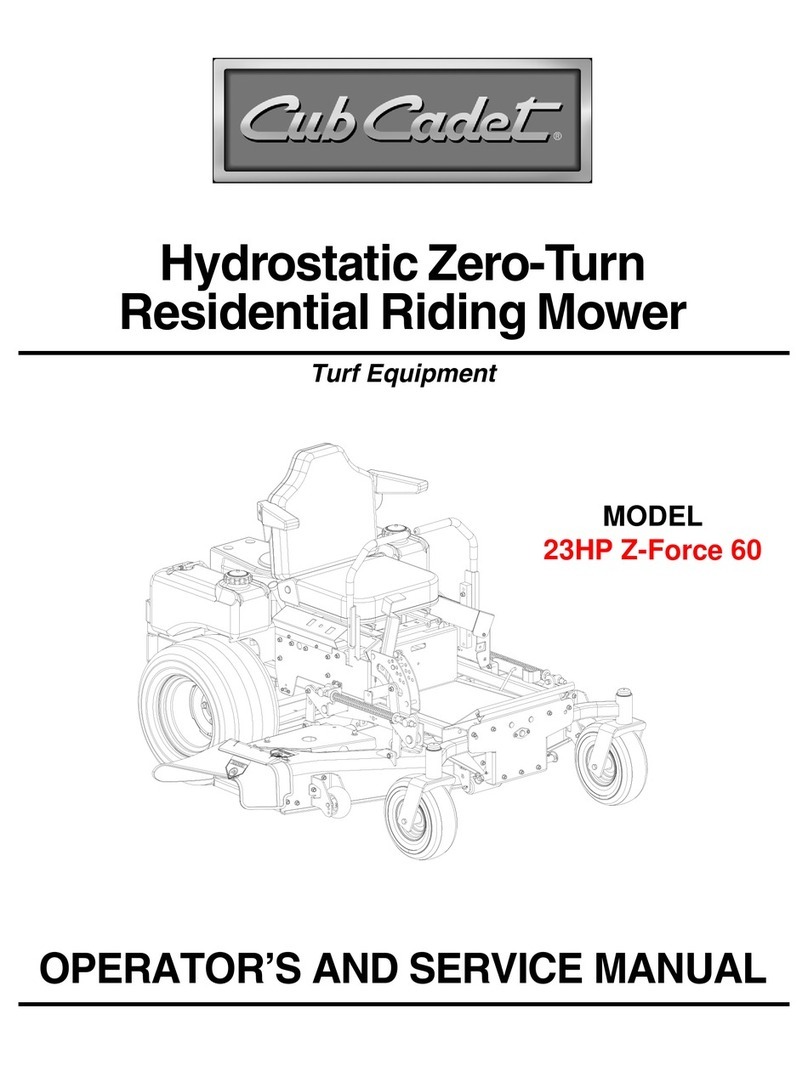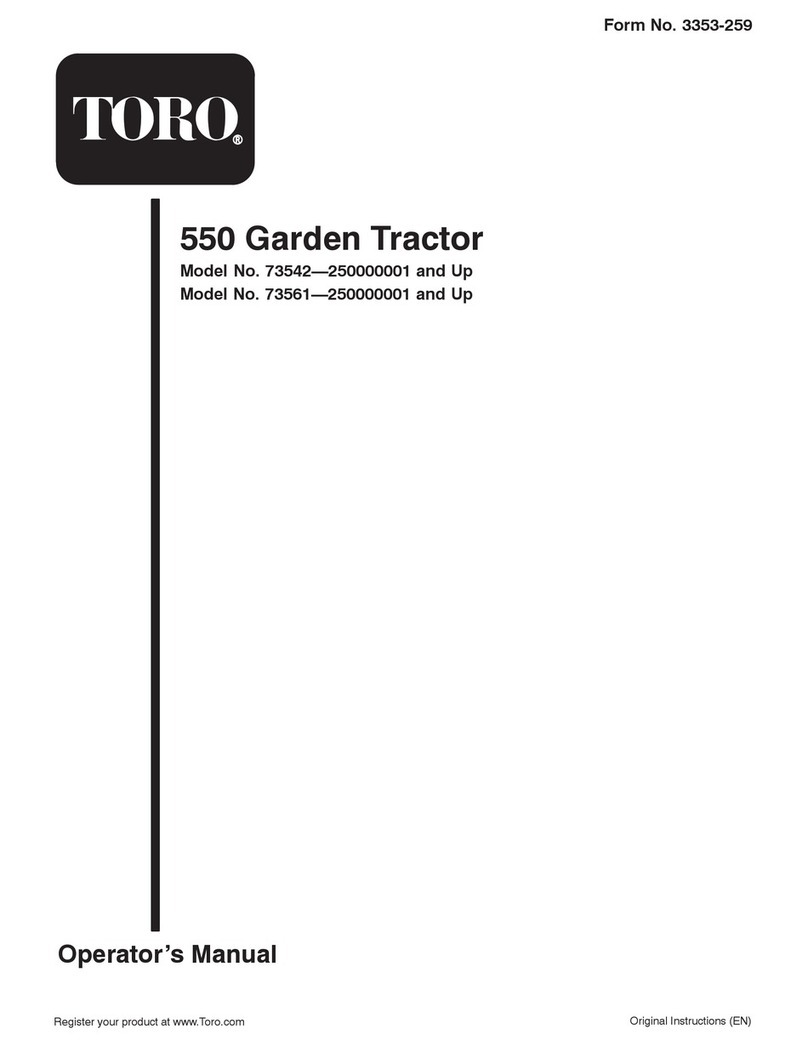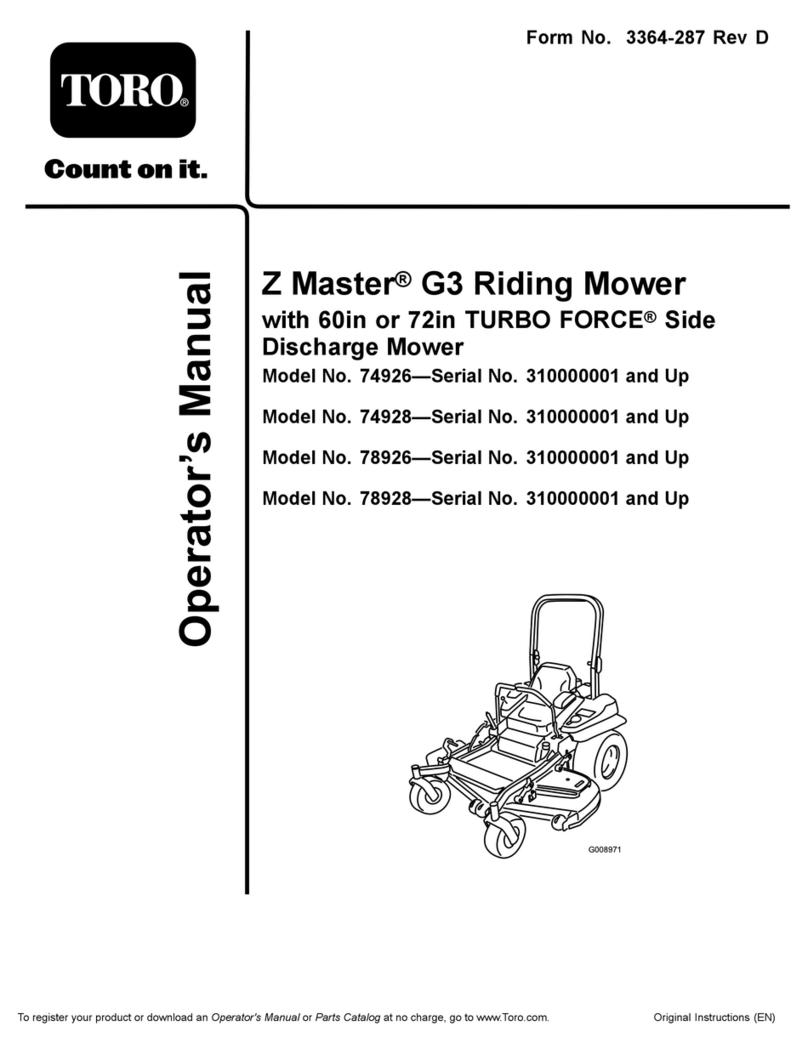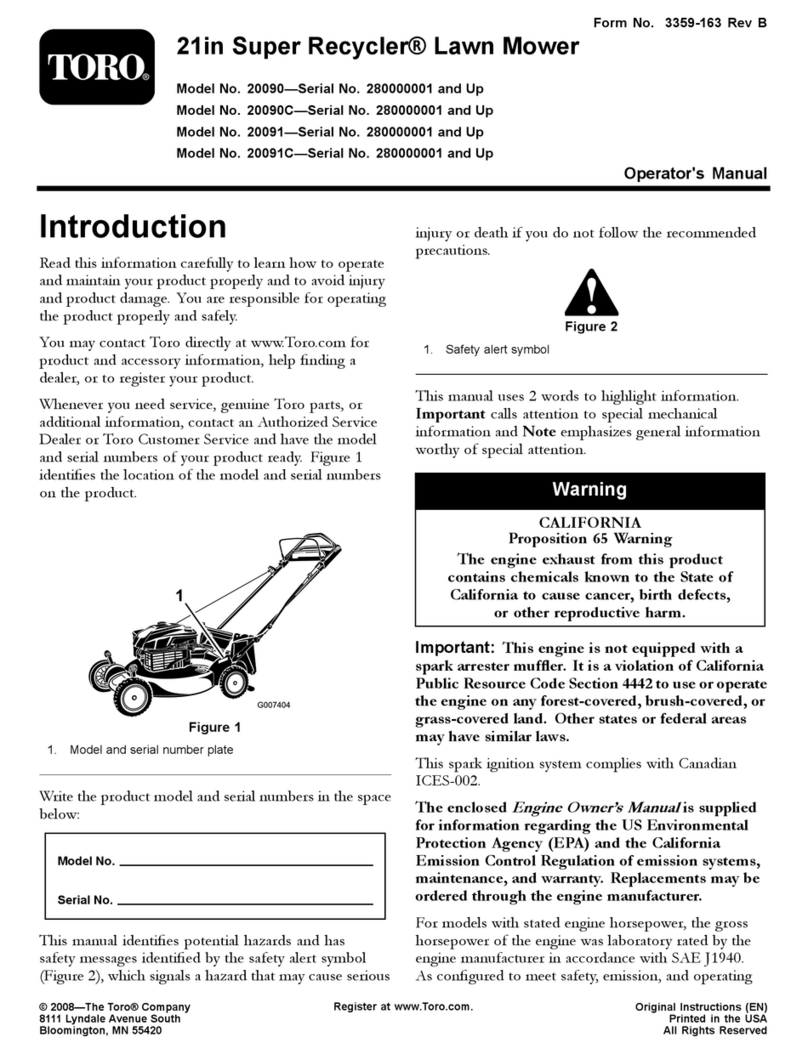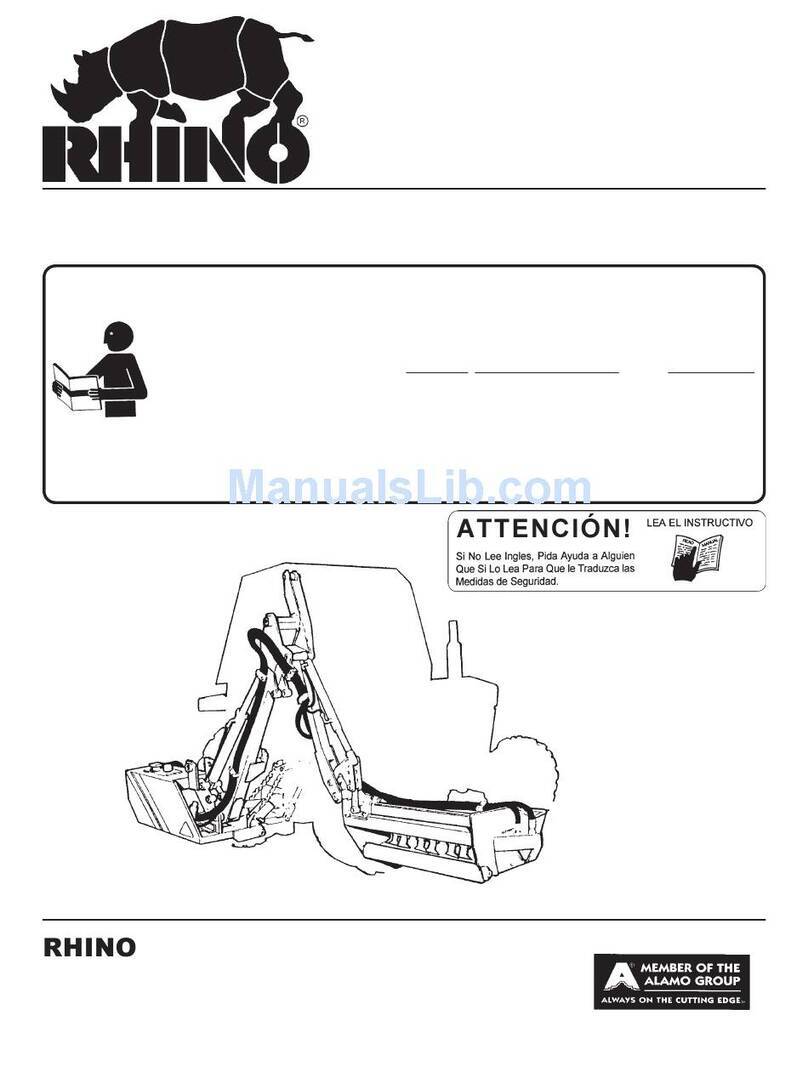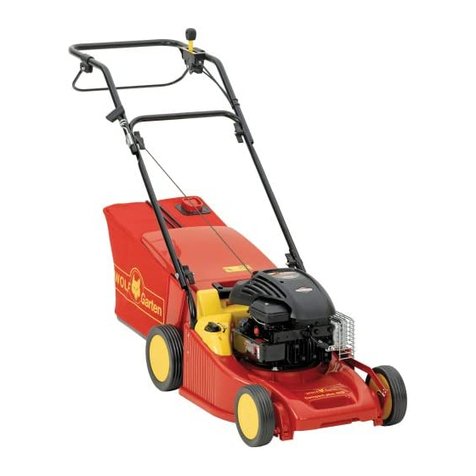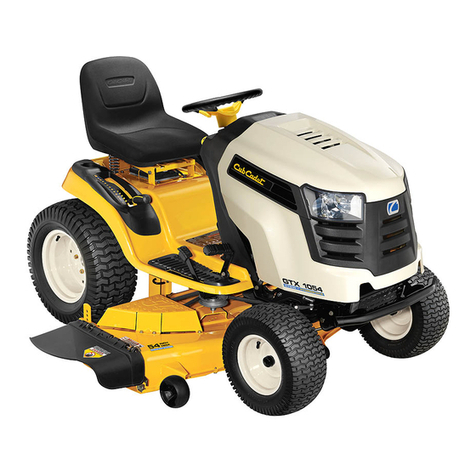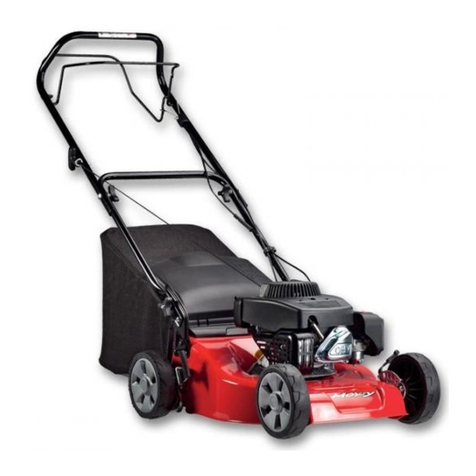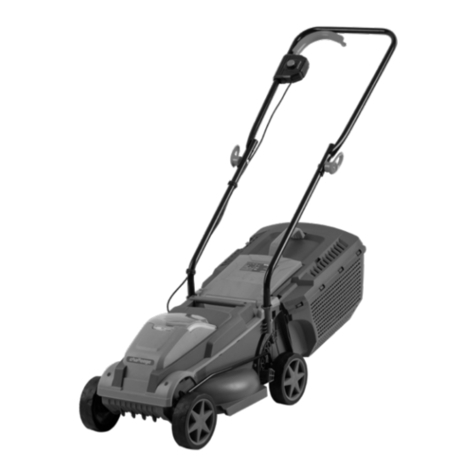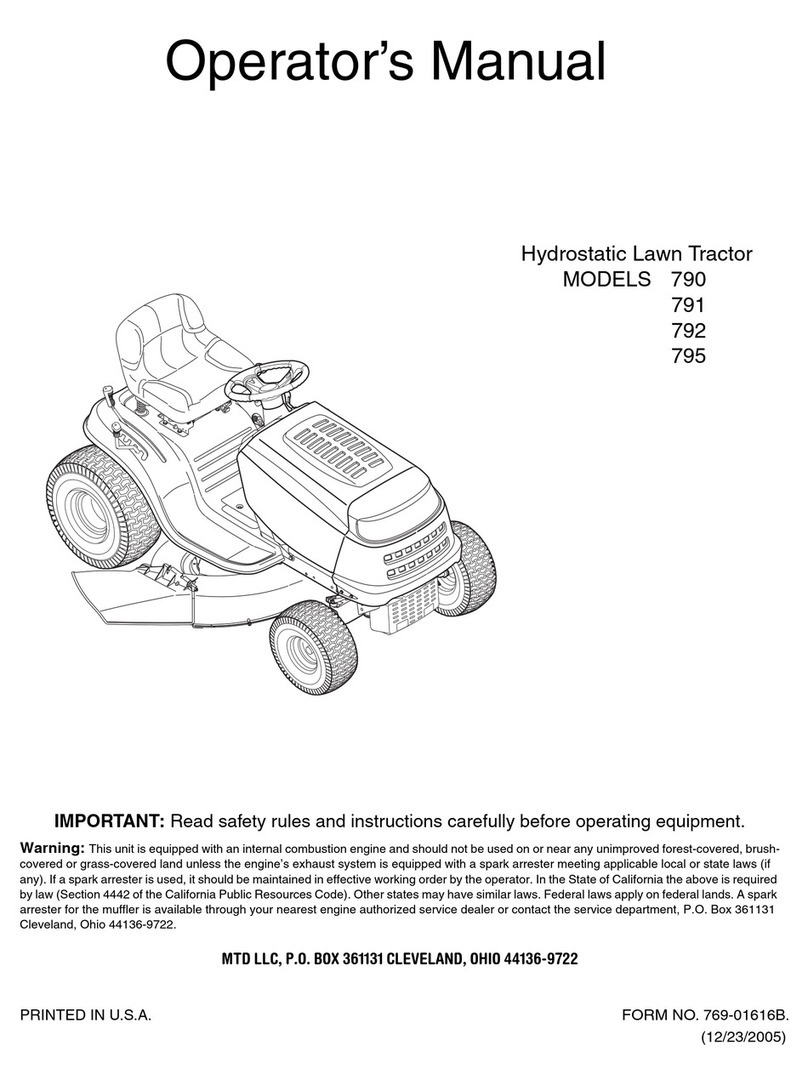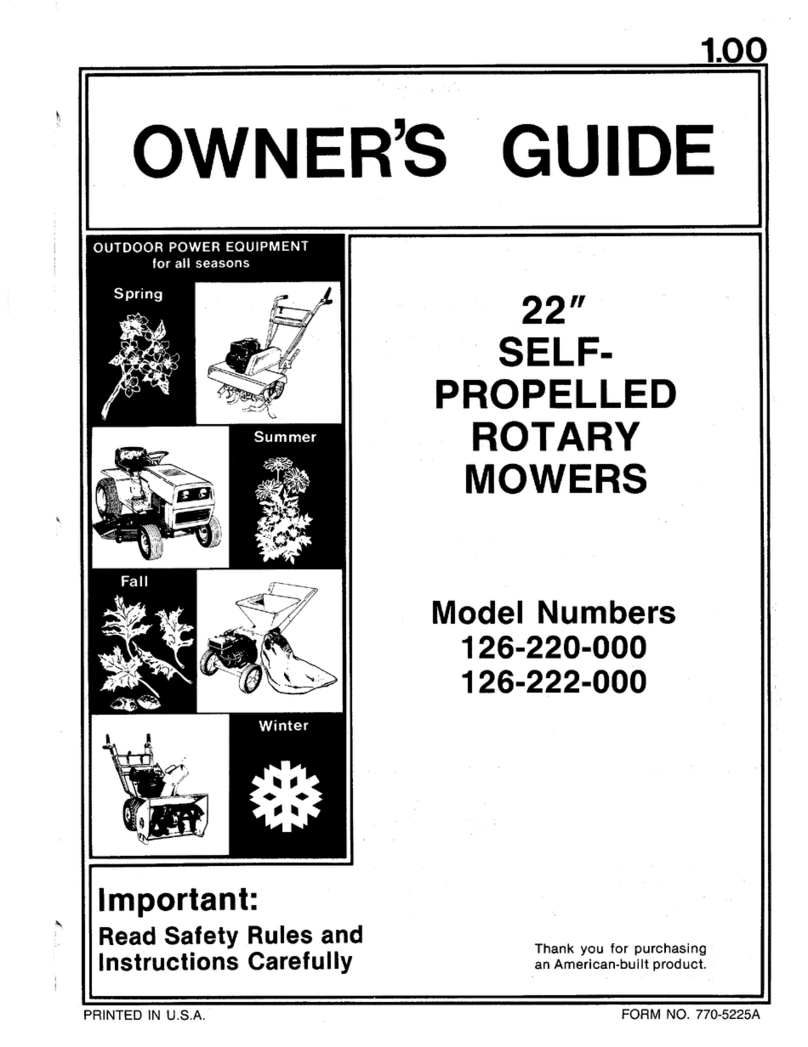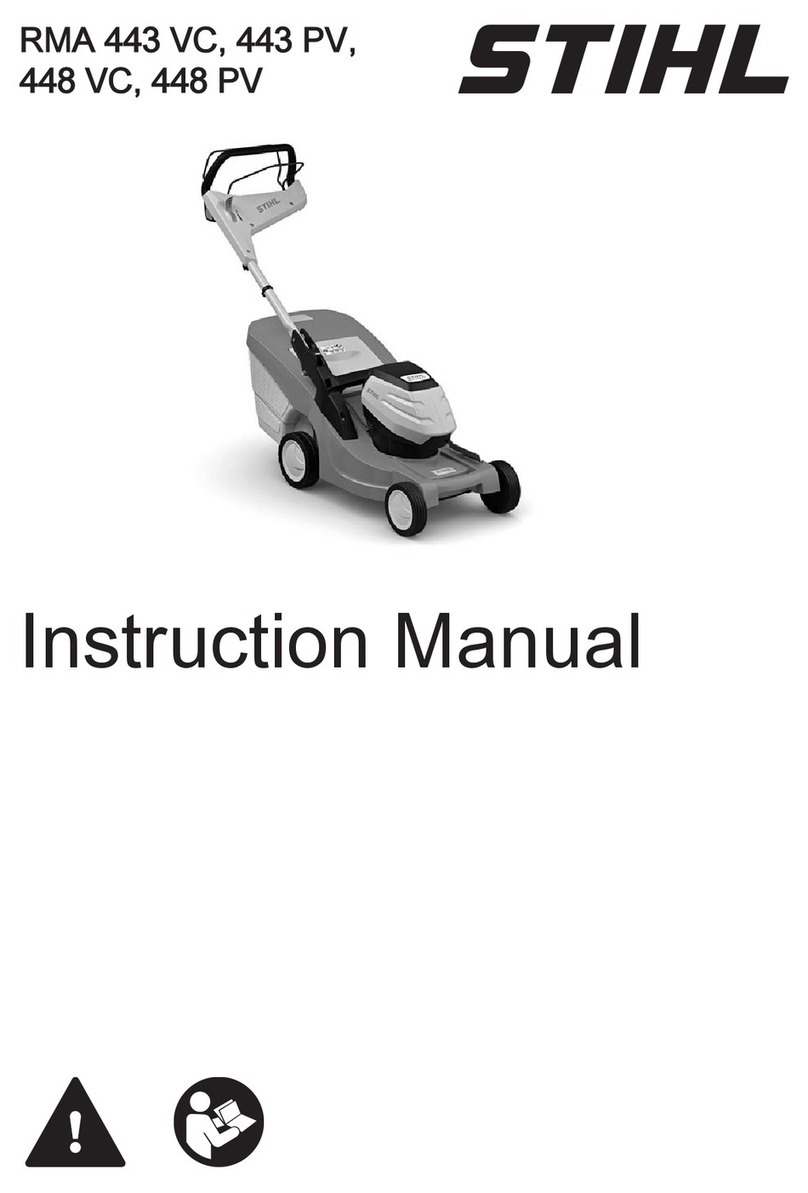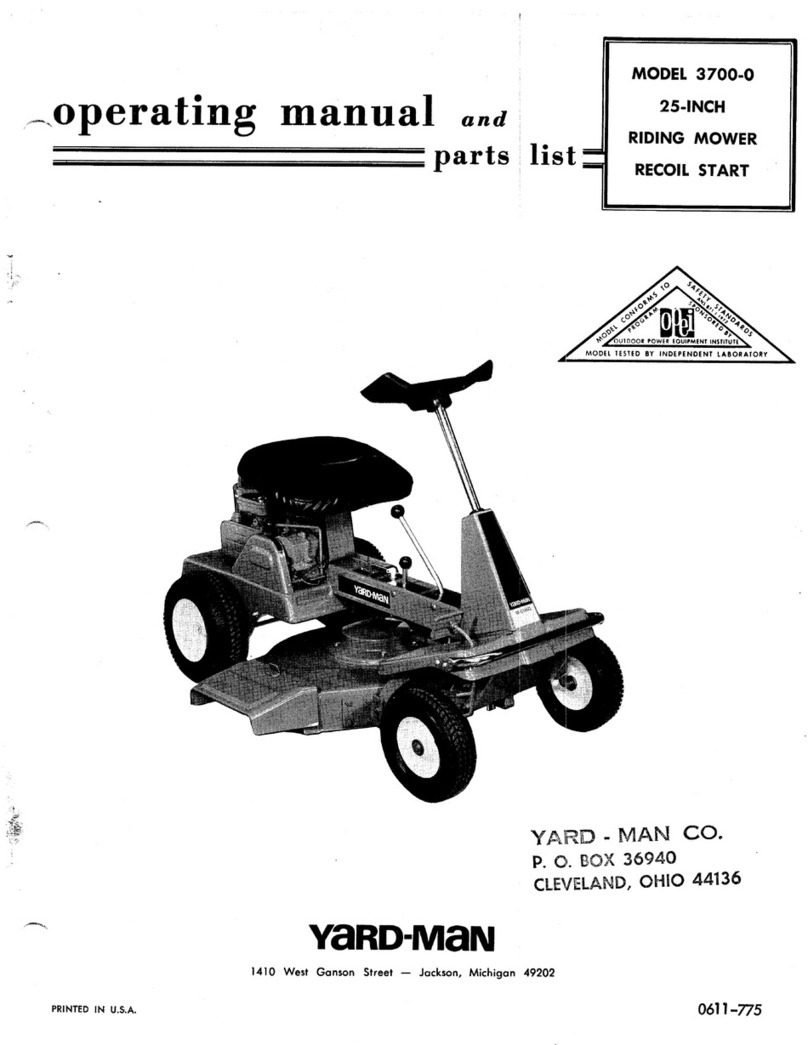Power: 4-cycle, 12.7 kw liquid cooled, 3 cylinder, verti-
cal overhead valve diesel engine. Maximum governed
engine speed (no load): 2800 +0 –50 rpm.
Engine Oil Capacity: 3.8 qt (3.6 L) without filter.
Engine Oil Filter: Replaceable, full-flow, spin-on type.
Toro Part No. 67-4330. Filter capacity: 0.5L.
Air Cleaner: Heavy-duty remote.
Cooling System:
Radiator—3.3 capacity.
Expansion Tank—Remote-mounted, 0.946 L capacity.
System contains a 50/50 mix of ethylene glycol anti-
freeze and water.
Drive:
Traction—All-hydraulic drive consisting of multiple
stack pump, valve and two low-speed, high-torque gear
motors to drive the front wheels.
Cutting Units—All hydraulic drive consisting of three
gear pump sections, three valve sections and three gear
motors which drive the reels.
Power Steering: Steering valve and cylinder operated
by a separate section of the fixed displacement hydraulic
gear pump.
Hydraulic Filter: 10-micron, cartridge type with 5,838
cm2filter area for extra long life.
Hydraulic Oil Reservoir: 17 l capacity with internal
baffle to promote cooling. Fluid used: Mobil DTE 26 or
Shell Tellus 68. Red Dye added to the oil.
Fuel Tank: 28.4 l capacity.
Fuel System: Includes a fuel filter/water separator and
12-volt electric (transistor type) fuel pump with replace-
able fuel filter.
Electrical & Instrumentation: Has ammeter, hour
meter, coolant temperature gauge and 4-bank warning
lamp cluster. The electrical system has a 40-amp alter-
nator, a 40-Amp self-resetting circuit breaker for glow
circuit protection and 15-amp circuit breaker on the con-
trol panel. The panel is removeable for easy access to
electrical components.
Interlock Switches: Prevent engine starting if the shift
selector, or mow/lift systems are engaged. They stop the
engine if you leave seat when either the traction selector
or mow/lift pedal is engaged.
Controls: Hand-operated ignition switch, throttle, gear
selector and steering control arm quick-adjust lever.
Foot operated traction drive. Brakes and mow/lift pedal.
Seat Adjustment: 10.1 cm forward and rearward. Can
be adjusted to achieve an additional 64 mm.
Brakes: 15.2 cm drum-type mechanical with rack and
pawl lock for parking.
Tire Pressure: Front—55–82 kPa. Rear—55–103 kPa.
Wheel Bearings: Drive Wheels—Needle provided in
wheel motors. Rear Caster Wheel—Timken tapered
roller.
General Specifications:
Width of Cut—59 in. (149 cm).
Wheel Tread—49–1/2 in. (125 cm).
Wheel Base—49 in. (124 cm).
Overall Length—91 in. (231 cm).
Overall Width—69-3/4 in. (177 cm).
Overall Height—50-1/4 in. (127 cm).
Net Weight (Wet)—1,233 lb (559 kg).
Shipping Weight—1,478 lb (670 kg).
Speeds @ 2800 engine rpm
1st—3.8 mph (6.1 km/hr).
2nd— 7.4 mph (11.9 km/hr).
Rev.— 1.9 mph (3.1 km/hr).
Engine Idle Speed—1700 rpm. +50 –0
Reels—1940 rpm.
Clip—(8-blade cutting unit.) 0.25 in. (6.3 mm).
Battery—12 volt, BCI group size 26, maintenance
free with 530 cranking amps at –18° C.
9
Speci ications
